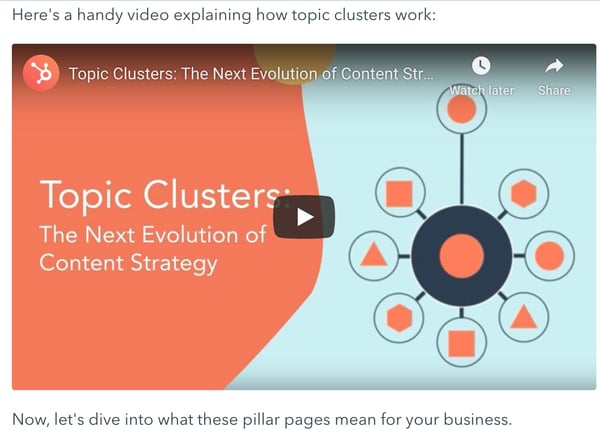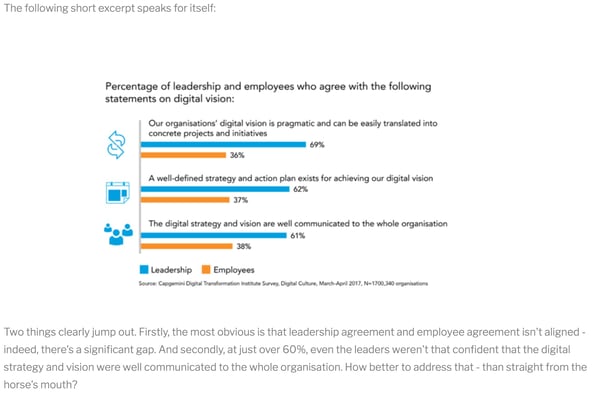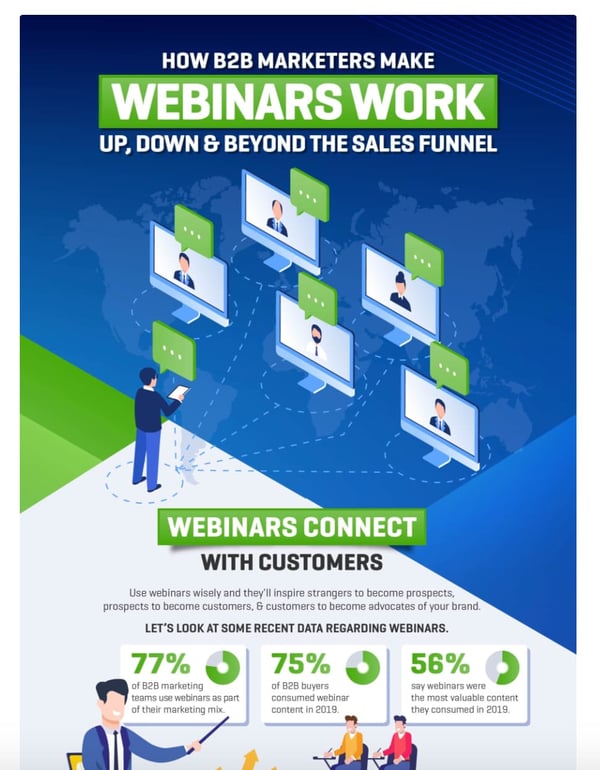How To Add Tag In Blog Post
Static marketing content is as outdated as print-only newspapers. Just as day-old newspapers become litter in the streets, static digital content is useless to the average reader. With such an inundation of static marketing content, one piece hardly stands out from others, meaning brands blend and ideas fade. Readers crave the dynamic nature of interactive digital content. An ion Interactive study measured the success and general feeling from marketers regarding interactive content. In terms of effectiveness, 93% of marketers say interactive media is great at educating buyers; 88% say it's effective at differentiating brands, whereas static was found to be only 55% effective. Not convinced yet? Did you know that interactive content also drives 2X more conversions than static content? Despite these numbers, many marketers shy away from interactive content. It might be because it has a reputation for being expensive and labor-intensive. But that is an unfair reputation. Creating interactive elements is, in fact, easy, fast and even free. These ten tools allow you to start immediately interacting with customers, which draws them in, converts at higher rates and gives feedback to improve your business. The original PlayBuzz site is for the average Internet user interested in which Hogwarts house they belong to or testing their knowledge about 1990s TV shows. However, PlayBuzz's business site is tailored to empowering companies to generate an interactive feature, embed it in their marketing content and watch user engagement rise and their network grow. With PlayBuzz you can create free countdowns, polls, personality quizzes, flip cards, trivia, rankable lists, general lists, gallery quizzes and a swipe voting feature made popular by dating apps. Each element has an appealing quality that catches readers' attention and can communicate information quickly in a visual manner. It also keeps visitors on your page longer and is designed for social sharing. When choosing from so many options, remember highly interactive features like quizzes and swiping are good for social platforms and visually driven posts, while flip cards and polls are good for text-heavy content. When you are designing these embeddable features, keep in mind your company's brand and voice, this will ensure consistency while adding that bonus feature that customers appreciate. The best way to track the success of PlayBuzz content is to monitor its social performance in shares, engagement and views. PlayBuzz is also user-friendly, so you might forget you're working while playing with the design tools and fun features. Check out these flip cards we made with it. Slide presentations are something nearly every professional has seen or used, whether it's from business trainings, college lectures or group projects. Putting information in a condensed, easily-digestible format is one of the most popular marketing, sales and proposal tactics because of its familiarity and logic. SlideShare can be embedded into any blog post and breaks down a topic for readers in a more visual and attractive manner than static paragraphs of text. Try it with an existing post that needs more visits but provides valuable content. Take text from the blog, simplify it for each slide, keep word count at a minimum, include a CTA on the last slide, and embed the feature somewhere in the post. If you put the slides near the top, you can include a friendly disclaimer such as, "Don't have time to read the rest? We summed it up for you here." Readers appreciate options for taking in information and really appreciate when you understand their limits. SlideShare transforms already written content into powerful snippets of data. Don't think of SlideShare as a place to put all the information in bullet points; think of it as a place to present an idea in a visual and condensed manner. It might be a good challenge to fit a hefty amount of information into a slide show. This exercise will help you write succinctly and think about content in an out-of-the-box way. Give the most important points priority instead of cramming an entire blog post into a slide show. Graphs, statistics and quick thoughts are especially effective on SlideShare. In the example below, Orly Ballesteros, a business event organizer in the Philippines, created a SlideShare on easy digital marketing for your business. Regardless of how you pronounce it ("JIF" or "GIF"), these little graphics excel at entertaining and inserting some fun into your digital content. It shows you have a sense of humor and don't take yourself too seriously. That said, make sure to use GIFs sparingly and only for appropriate topics. Many websites have tools for creating your own animated GIF or have a domain of popular ones for every emotion and situation. This imagery also warrants the use of BuzzFeed-worthy titles and descriptions to accompany your chosen GIFs. This type of interactive content performs excellently on social platforms because of the flashy element and viral qualities. These qualities lend themselves well to tracking social success easily by monitoring shares, likes and engagement. When choosing or creating a GIF, make sure it is a reference your audience will understand. You wouldn't want to use a GIF from a popular TV show if it's not likely your customers are familiar with it. However, if pop culture references are common in your content, feel free to use GIFs as freely as you'd like. Websites such as GIPHY make the art of finding the right GIF quick and entertaining, while at the same time providing you with everything you need to share with your audience. Take the GIF below - I typed "content marketing' into the search box, found this gem from Mad Men, and simply copied the embed code into the blog. Easy! Image Source If the products or services you're marketing lend well to quizzing your prospects, Qzzr is the right tool for engaging them further. This free quiz-making platform allows you to create a quiz in minutes, embed it into any post and track the results. It also comes with a WordPress plugin for easy integration. Customers love to test their knowledge, if only to prove how much they know. They also love to reveal pieces of their personality and discover new sides of themselves. Giving your customers these opportunities through quizzes is the perfect gateway for interaction and connection. Keep quizzes as short as possible so as not to fatigue your readers. Make sure the answers are pointed and don't allow quiz takers to avoid questions. There is nothing worse than a vague answer and worthless results. And there is nothing better than seeing interactions with customers and the fruitful rewards of getting specific. You might use a quiz if you're trying to target specific products or services to your customers as they begin their buying journey. The fashion-delivery company Stitch Fix requires all first-time users to take a fashion quiz to determine which products will please them most. You can emulate this model or use a quiz for testing your customer's knowledge about your industry, current events or other relevant topics. Readers especially love quizzes that tell them which car, building, time period, scientist, politician, 1980s pop star, etc. they are most like. The great thing about Qzzr is the ability to integrate with CRM systems. This feature allows you to track the success of each quiz, pull data from the results and target customers more accurately and personally. Podcasts aren't just for Serial fans or listeners of public radio. The audio format is a gold mine for the busy professional. It gives multitaskers a chance to consume your content on their terms. There might not be enough time in the day to read all the content circulating within certain industries or interact with specific companies. But if marketers give professionals a way to gain all the benefits of static content during their daily commute without burying their faces in a screen, they might see a rise in interest and customer conversation. It's also great for audio learners and is a much more casual and open environment for bringing guests and commentators to foster a fruitful discussion. Before creating a podcast, study up. Listen to all different kinds of podcasts to figure out what works. It's also good to pay attention to which length is appropriate. If you're getting more downloads and listens for shorter episodes, your customers might want quick conversation. But if you see a demand for longer form podcasts, your customers probably appreciate deep dives into certain topics. Bring in guests for fresh perspective. Try implementing different segments to break up the monotony of a single episode. But make sure to get into the groove of podcasting before you give up or count your early success. As you develop your podcast and find what works, you will find you can adjust and evolve episode to episode based on listener feedback or performance statistics. The key is keeping your eyes and ears open. Podcasting is just as much about listening as it is about talking. Similar to podcasts, embedding a YouTube video into your blog posts can make your post more interesting. When you add a video, it gives readers the option to watch a video instead of reading the post. This means that you won't lose any readers who are more interested in video content. Additionally, it makes your post easier to scroll through and gives readers a chance to interact and engage with your post. For example, in the post below, HubSpot embedded a YouTube video into a blog post explaining pillar pages and topic clusters. Another way to make your blog posts more interactive is to include charts and graphs. Adding visualizations to your blog posts helps your readers understand and analyze the information. You can choose to make your own charts and graphs by using visualization tools or you can hire a graphics expert to do it for you. While it may seem like a daunting task, creating a visualization can actually be easy. In fact, you can create charts in a simple program like Excel or Google Sheets. In the example below, UK firm Carvill Creative includes a chart to help readers visualize the expert opinions of leadership. Not to reiterate, but for your blog posts to be interactive, you should include multimedia elements throughout the post. As a bonus, those elements also make it easier to read, so users are more likely to read through the entire post. One element that can help you do this is infographics. In fact, sometimes you can create an infographic to communicate most of the information in a blog post. For example, in this blog post by HubSpot, we included an introduction, and then let the infographic do the talking. Another great way to add interactive elements to your blog posts is to include images. First, this helps readers visualize what you're talking about. Second, images are just more interesting to look at. For example, this post on The Verge, includes a moving image so readers can see a demonstration. If you're looking for a way to include a simple, interactive design element in your blog posts, look no further than a pull quote. Pull quotes are just snippets of text from your blog post that relay the most important information. Reading a pull quote should engage your reader and make them more interested in what you have to say. Hopefully, if they're skimming a pull quote, they're encouraged to dive in to the post because it's so interesting. Interactive content rules the marketing landscape for now and the foreseeable future. There's no denying customers want more than some block text on a page. They want to dive in, learn more, give feedback and get to know the company. Just ensure you're balancing the message within the format and you should see success. Trying any of these methods should result in an increase of engagement and possibly even leads without the headache of a complicated tool and it won't cost you a cent. Editor's note: This post was originally published in February 2016 and has been updated for comprehensiveness. 
Interactive Blog Examples
1. PlayBuzz
2. SlideShare
3. Make a GIF
4. Qzzr
5. Podcasts
6. YouTube Videos

7. Charts and Graphs

8. Infographics

9. Images

10. Pull Quotes


Originally published Jun 23, 2020 6:00:00 PM, updated June 24 2020
How To Add Tag In Blog Post
Source: https://blog.hubspot.com/marketing/interactive-blog-post
Posted by: murphytorat1997.blogspot.com

0 Response to "How To Add Tag In Blog Post"
Post a Comment